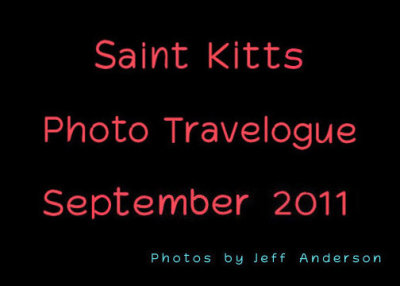
Saint Kitts Photo Travelogue cover page. |

Map of Saint Kitts & Nevis with the star indicating Basseterre. |

Morning view of Basseterre from my cruise ship as we entered port. |

Peaks of St. Kitts with morning clouds. |

An old-fashioned British telephone booth in Basseterre, a reminder of the former colonial days of St. Kitts & Nevis. |

Birds perched in a tree in St. Kitts. |
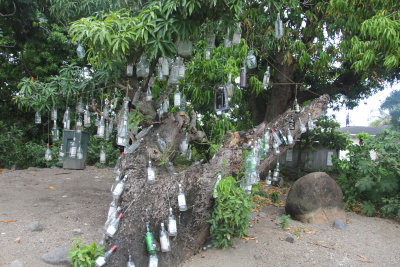
We drove by a tree which was decorated with rum bottles. |
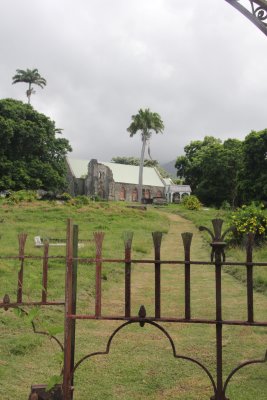
Also in St. Kitts, we passed by the Middle Island Anglican Church. |
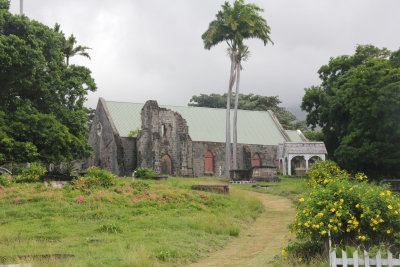
It was the first Anglican Church in the Eastern Caribbean. Thomas Warner, the first English Governor is buried in its cemetery. |

Fishermen in St. Kitts reeling in the fishing net. |

Close-up of the fishing boat. |
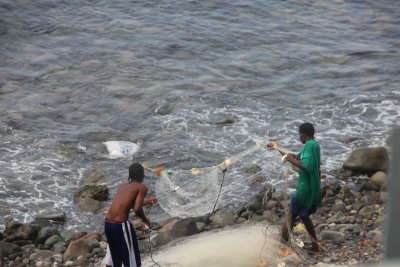
Reeling in the net was hard work. |
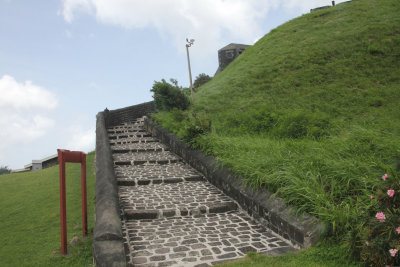
Steps leading up to the famous Brimstone Hill Fortress dating back to the late 1600s and a UNESCO World Heritage Site. |

Cannons at the bottom of the fortress, which was built on the nearly 800 feet high, steep and precipitous Brimstone Hill. |

The steps leading to the fortress are very steep, too. |

The walls of the fortress are constructed predominantly of stone, skillfully fabricated from the local hard volcanic rock. |
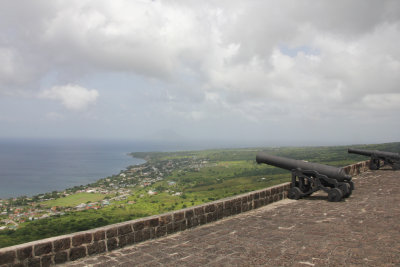
View from Brimstone Hill Fortress of St. Kitts and of the Caribbean Sea. |
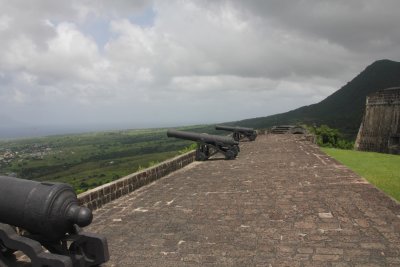
Defensive cannons overlooking the forest-covered mountains, cultivated fields and the historical township of Sandy Point. |
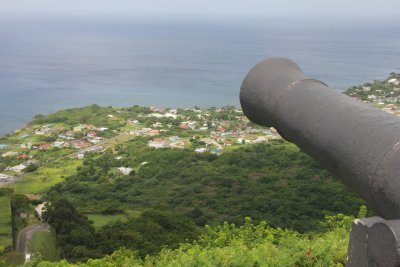
The high elevation made defending the fortress and the island easier for the British. |
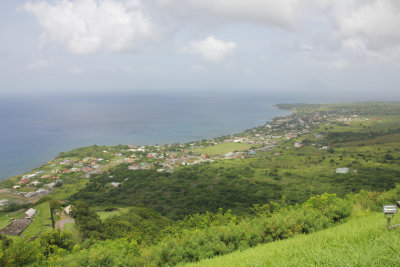
It appeared to be a beautiful day, although Tropical Storm Maria was headed towards St. Kitts & Nevis. |
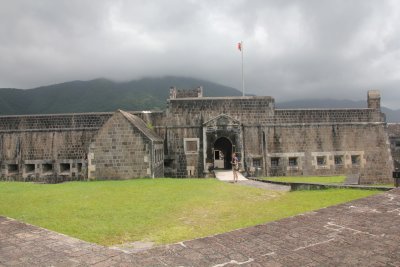
Front of Brimstone Hill Fortress. It was built by the British after the previous (and weaker) Fort Charles fell to the French. |

Main entrance to the Brimstone Hill Fortress. One has to pass over a moat to enter. |

Gun ports to protect the fortress at the main entrance. |

Interior of the fortress. The mortar cementing the stones was produced on site from the limestone that covers much of the slope. |
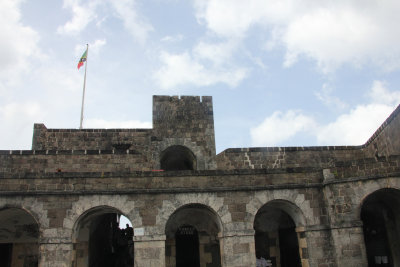
The scale and magnificence of Brimstone Hill Fortress signified the importance of St. Kitts during the 17th to 18th centuries. |
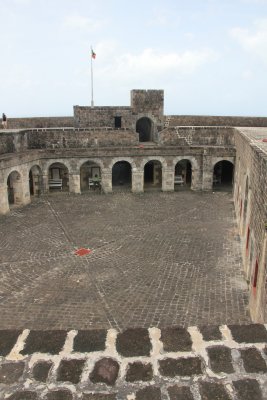
View of the fortress from the gun deck. St. Kitts was prone to attack due to the lucrative sugar cane and rum trade. |

The fortress is a tribute British military engineers who designed it and to the African slaves who built and maintained it. |
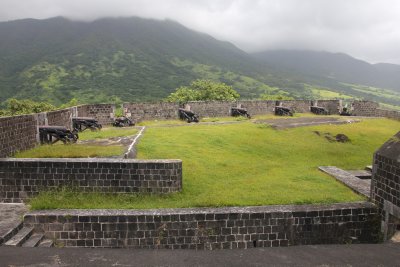
Cannons were first mounted on Brimstone Hill in 1690, when the British used them to recapture Fort Charles from the French. |
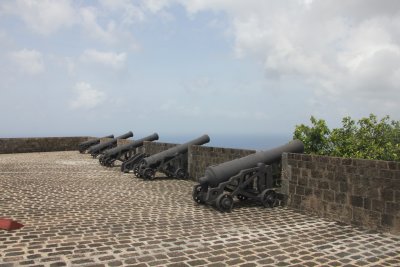
The British surrendered the fortress in 1782, when the French, under Admiral Comte François Joseph de Grasse, laid siege to it. |

A year later, the Treaty of Paris (1783) restored St. Kitts and Brimstone Hill to British rule. |
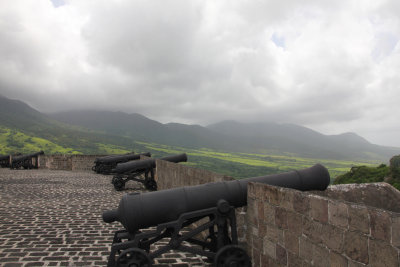
Shortly thereafter, the British augmented and strengthened the fortress, and Brimstone Hill never again fell to an enemy force. |
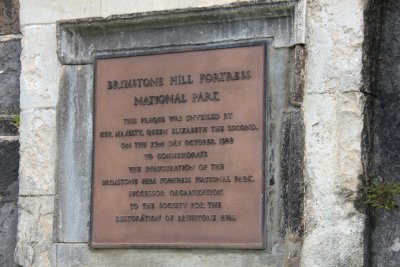
The British abandoned the fortress in the mid-19th century. It was restored and made a national park by Queen Elizabeth in 1985. |
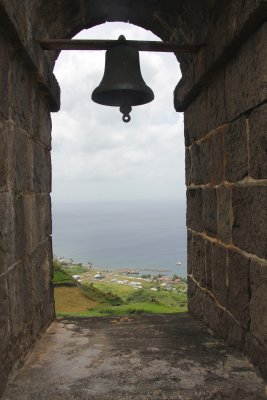
Bell at the Brimstone Hill Fortress with a view of the Caribbean Sea in the background. |

View from the upper fortress of the lower fortifications. |

The steep path and steps going down from the Brimstone Hill Fortress. |
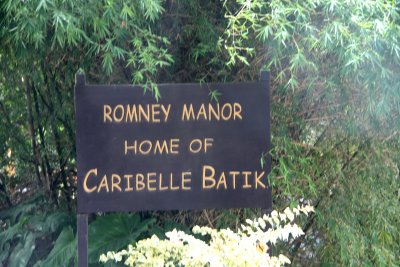
The next stop in St. Kitts was to Romney Manor, the home of Caribelle Batik. |

The saman tree on the Romney Manor property is 350 years old and 24 ft. in diameter. |
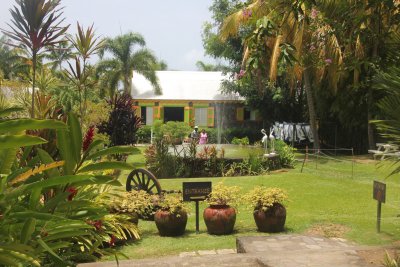
Entrance to Romney Manor. It was once owned by Sam Jefferson II, the great, great, great grandfather of Thomas Jefferson. |

It is painted in shades of yellow, orange and green. |

The great house was renamed Romney Manor following its acquisition in the early 17th century by the Earl of Romney. |
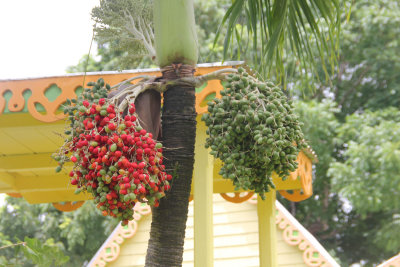
I admired the tropical plants, there. |
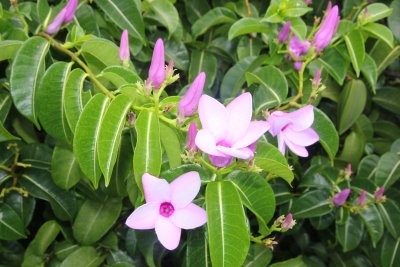
There were also beautiful tropical flowers at Romney Manor. |
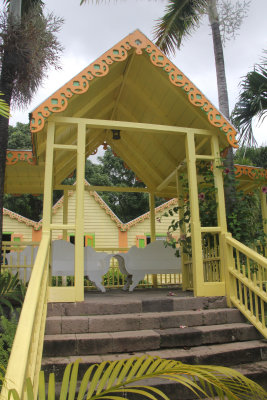
Steps and sitting area with white benches. |

This wagon-wheel bench is an attractive addition to the garden. |
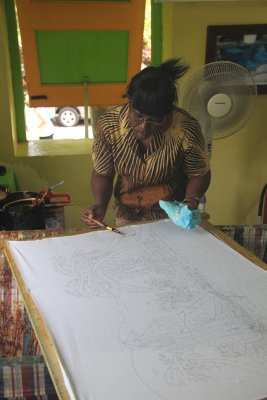
This woman at Caribelle Batik was just starting on a batik print. |
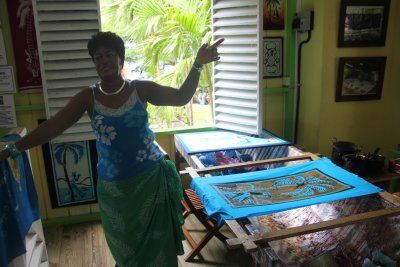
Woman demonstrating the art of making batiks using the ancient Indonesian methods of resisting dye with wax. |
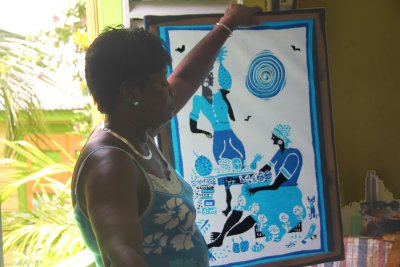
She showed us a finished batik print, which requires many steps to complete. |
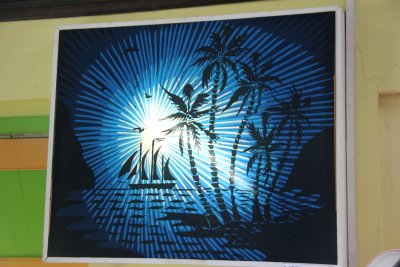
One of the magnificent finished batik prints at Caribelle Batik. |
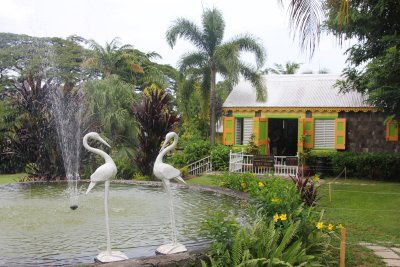
After the batik demonstration, I walked around the gardens. |
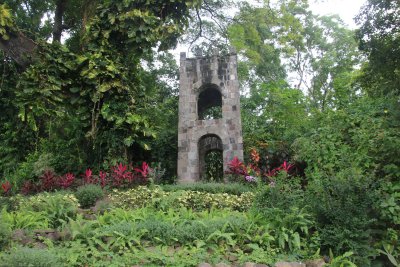
This garden has an interesting stone tower. |
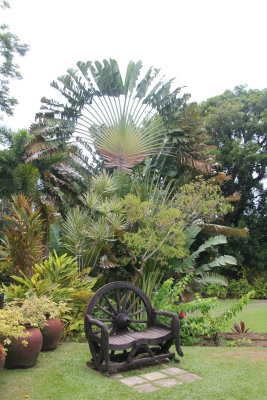
This palm tree looks like a fan behind this wagon wheel bench. |
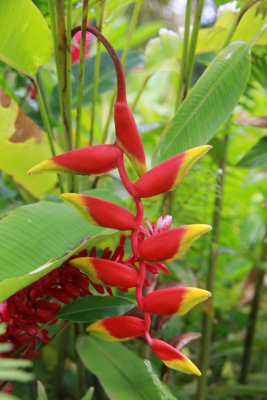
A bird of paradise plant at Romney Manor. |

A tamarind plant with young unripened tamarind fruit. |

Beautiful yellow allamanda plants. Romney Manor was a tropical paradise. |

The next stop in St. Kitts was to Timothy Hill where we had a great view of Frigate Bay. |

The surf in Frigate Bay was really picking up since Tropical Storm Maria was approaching. |
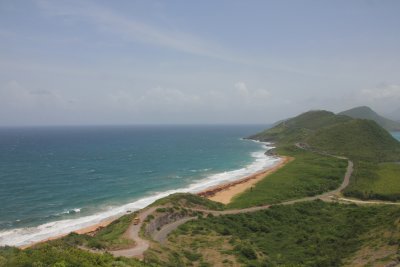
View of the Southeast Peninsula of St. Kitts from Timothy Hill. |

From this vantage point, you can see both the Caribbean Sea and the Atlantic Ocean at the same time. |
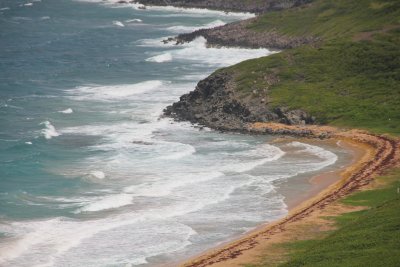
The surf here was picking up as well. |

A big wave was coming in due to the approaching Tropical Storm Maria. |
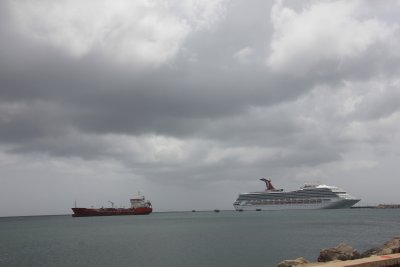
View of the Carnival Victory cruise ship and a commercial ship nearby. |
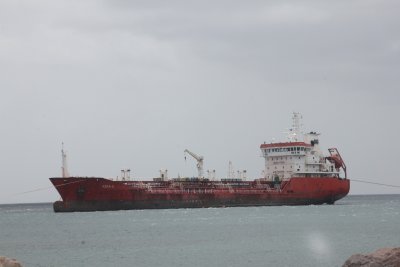
Close-up of the commercial ship. |

In the heart of downtown Basseterre, St. Kitts, is the Berkley Memorial. It is also called "The Circus." |
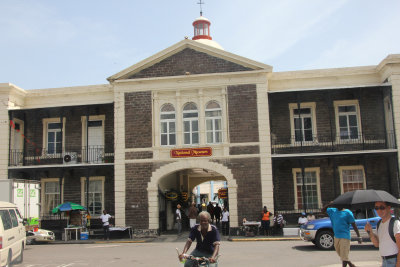
The National Museum is also in downtown Basseterre. It is housed in the former historic Old Treasury Building. |
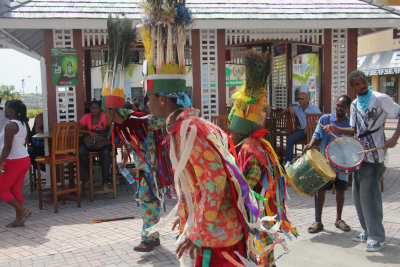
Even though it wasn't Carnival, these St. Kitts' residents got dressed up in Carnival costumes for the benefit of the tourists. |

In addition to his colorful costume, he has an amazing hat. |
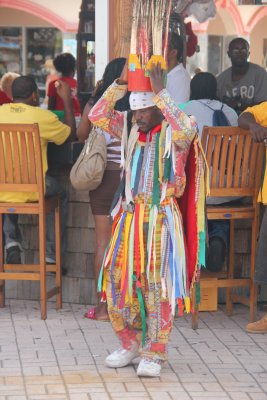
Adjusting his hat. |
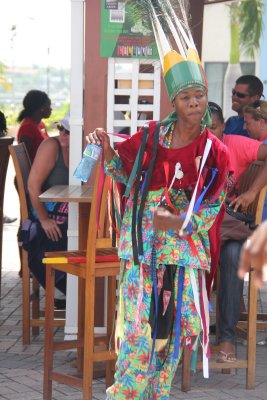
She was dancing for tips. |

Close-up of a woman dancing. |
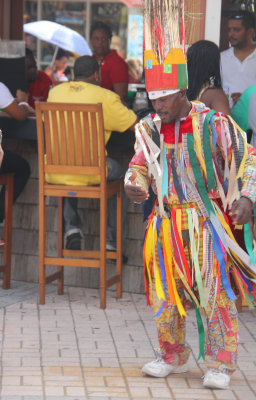
They expected tips for these photos that I took of them. |
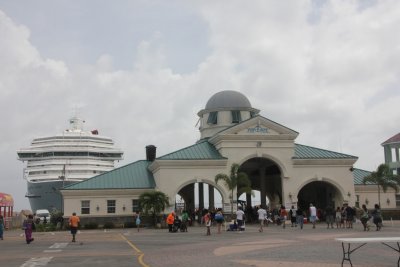
Port Zante in Basseterre is where the cruise ships dock. That's the Carnival Victory in the background. |

Close-up of Port Zante. There were dozens of tourist shops there. |

One of two murals when passing through the gates of Port Zante. |
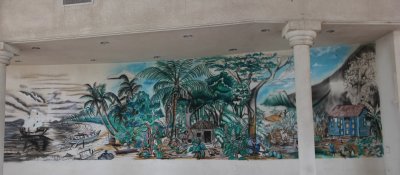
View of the second mural. Both murals have Caribbean themes. |
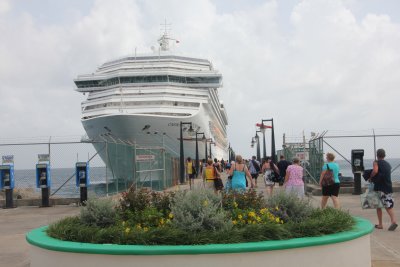
I was heading back to my cruise ship, the Carnival Victory. |

Close-up of the front of the Carnival Victory. It is a huge ship. |
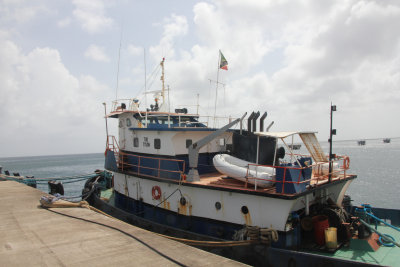
This boat, called the "Tug Tyson" was docked there, too. |
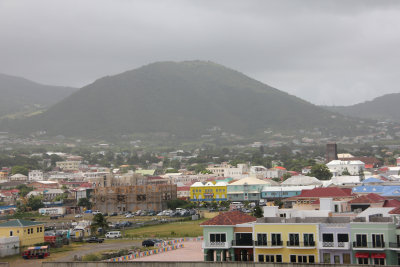
View of the town of Basseterre, St. Kitts from the Carnival Victory. |
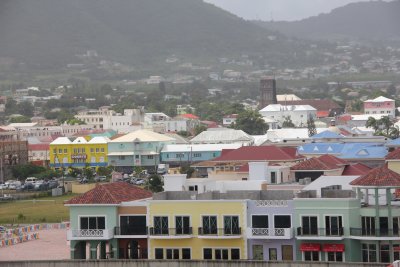
The buildings in Basseterre were painted in pastel colors. |
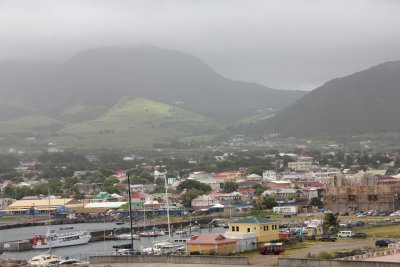
More views of the town from the cruise ship. |

Basseterre was getting smaller as the Carnival Victory left port. |











